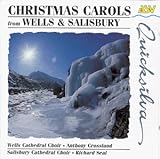The first thing I noticed was the musical typography. When I tried to sing the carols, the 1982 Hymnal used very small note symbols that were impossible to read in the low light of the church. I don't have my library of hymnals in my suitcase, but I checked the 1940 Hymnal at our relative's house and the staff spacing appeared to be 20-25% bigger. (I will have to lay them side-by-side when I get home).
The other problem was the politically correct Christmas carols. Under Hymn #87, Charles Wesley’s Christmas megahit has been further mangled:
Hail, the heaven-born Prince of Peace:In searching for the exact PC words, I found an Englishwoman (and poet) who objected to this abomination as grocery story background music. She should count her blessings: at least in England grocery stores play Christ-mas carols.The next mangled hymn was in the second verse of Isaac Watts' all-time favorite, Joy to the World! As printed in the 1982 hymnal, the m-bomb has been edited out:
hail, the Sun of Righteousness.
Light and life to all he brings,
risen with healing in his wings.
Mild he lays his glory by,
born that man we no more may die,
born to raise the sons of us from the earth,
born to give them us second birth.
Hark, the herald-angels sing
glory to the new-born King.
Joy to the world! the Savior reigns;This still conveys the original sense of praising God, but to me the imperative seems much weaker since it is directed to the first person plural.
let men their us our songs employ,
while fields and floods, rocks, hills and plains
repeat the sounding joy,
repeat the sounding joy,
repeat, repeat the sounding joy.
I had forgotten about this bowdlerization of traditional carols, and thus was not prepared to belt out the correct wording when the time came. The congregation seemed unsure as to whether to use the old or the new words, but obviously a generation of Americans is being raised to assume that the PC words are the correct way to sing these hymns.
From Tuesday's selection of six hymns, I had assumed the pattern was that the PECUSA hymnal committee would not change the first verse of a hymn because it was too visible, but were tinkering with the second verses. However, in the final hymn — O Little Town of Bethlehem — the dreaded m-word made it through intact. Verse 2 of Hymn #79 reports
For Christ is born of Mary;I don't know why this use of the m-word survived but others did not.
and gathered all above,
while mortals sleep, the angels keep
their watch of wondering love.
O morning stars, together
proclaim the holy birth!
and praises sing to God the King,
and peace to men on earth.
All told, this reconfirms my opinion that Hymnal 1982 is an interesting supplemental book, but dubious as a primary pew hymnal.


